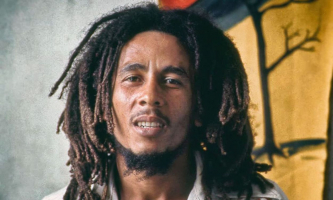Top 7 Interesting Facts about Bob Dylan
There are interesting facts about Bob Dylan that you may not know. Dylan has also been named one of the most influential musicians in history, and has topped ... read more...more than 3,000 performances in his lifetime. This famous musician and poet is also the only singer to receive a prestigious global award.
-
One of the interesting facts about Bob Dylan is that around 1966, fans thought he was dead. Dylan lost control of his Triumph motorcycle on July 29, 1966, while riding near Woodstock, New York. Fans were confused about his whereabouts because he was one of the top performers at the time and an outspoken critic on social media. According to Dylan's biographers, the accident gave him a chance to get away from the stresses in his environment. According to Dylan's autobiography Chronicles: "Despite being hurt in a motorcycle accident, I made a full recovery. In reality, I wished to escape the rat race." He didn't travel again for about 8 years and made a very small number of public appearances.
Years later, the celebrity acknowledged his weariness. He has finished a lengthy tour, his drug usage is out of control, and he must deal with stalkers and obstacles posed by adoring admirers. After an incident in which a fan approached Dylan with a rifle, it was widely reported at the time that Dylan slept with a gun. While Bob Dylan is recovering at home with his wife and children, the press has been working nonstop to capture images of him.
He had to stop the tour due to the injury, but in that period, he recorded a lot of songs with the band members who had previously accompanied him on tour. The Basement Tapes, a collaboration album using these recordings, was published in 1975.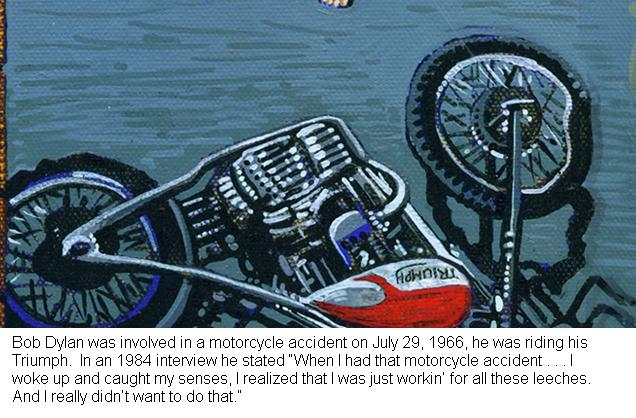
Bob Dylan's Motorcycle accident July 29 1966 - Photo: http://3.bp.blogspot.com/ 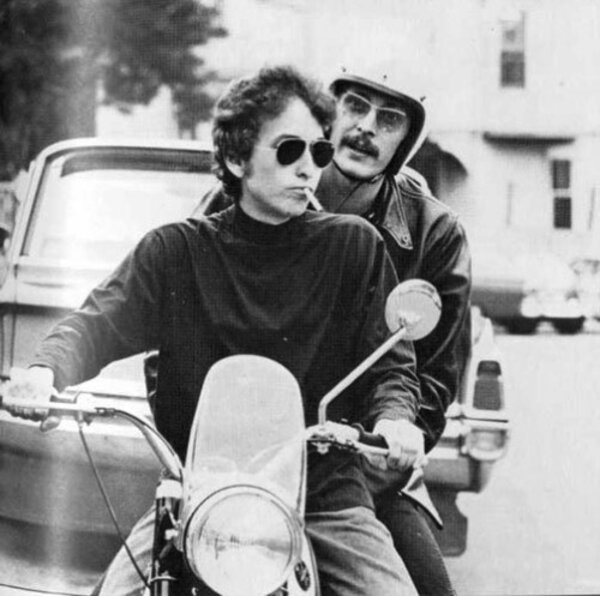
Bob Dylan's Motorcycle accident July 29 1966 - https://25.media.tumblr.com/ -
When Dylan first arrived in New York in 1961, he visited the city to perform and to see his musical hero Woody Guthrie, who was hospitalized at Greystone Park Psychiatric Hospital due to Huntington's disease. Dylan made friends with Guthrie Ramblin's bodyguard Jack Elliott and also paid Guthrie a visit to the hospital. Many of Guthrie's songs are influenced by Elliott, and in Chronicles: Volume One, Dylan pays tribute to Elliott. Later, Dylan said that the African-American poets he encountered on New York's streets, particularly Big Brown, had impacted him.
Beginning in February 1961, Dylan performed at venues around Greenwich Village, where he met and acquired songs from folk musicians like Dave Van Ronk, Fred Neil, Odetta, and the New Lost City Ramblers. Clancy Brothers and Tommy Makem are Irish artists. On Harry Belafonte's 1962 album Midnight Special, Dylan filled in for the unwell Sonny Terry because he frequently played harmonica accompaniment for other performers. Later on, Dylan referred to the event as "my professional recording debut."
His debut album, which is today regarded as one of the most important pieces of popular music, was followed by several additional big songs. Highway 61 Revisited was out in 1965 after Bringing It All Back Home. Additionally, Blonde On Blonde and Blood on the Tracks were both produced by Dylan and Hammond.
Through his lengthy tours in 1965 and 1966, Dylan attracted a lot of attention. Producer DA Pennebaker used a video from the 1967 smash song Don't Look Back to document the folk singer's life on stage.
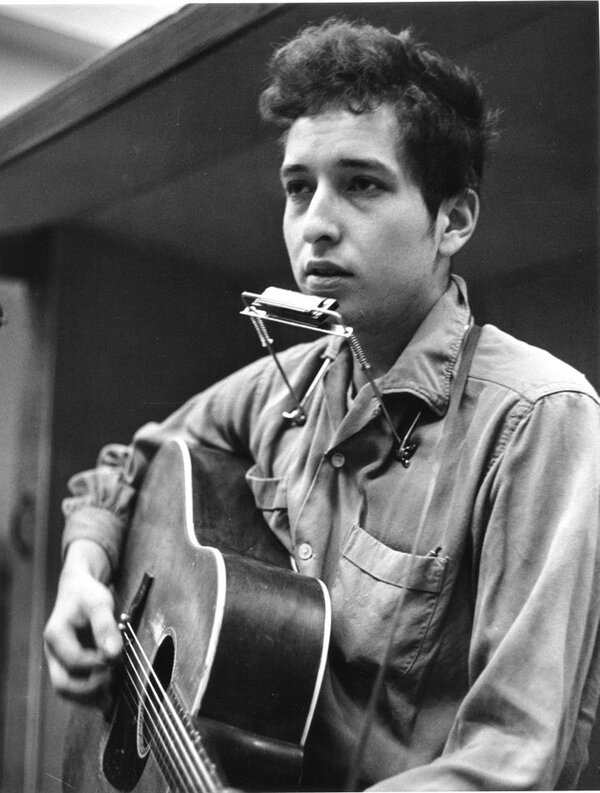
Bob Dylan's First Major New York City Performance: April 11, 1961 - Photo: https://www.huffpost.com/ 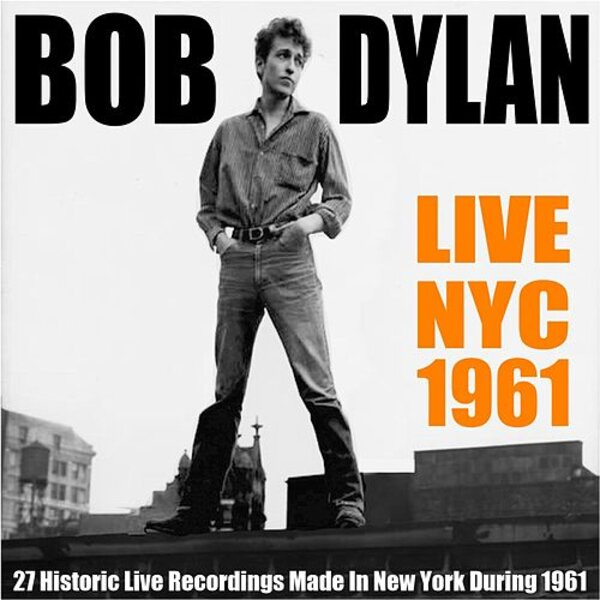
Photo: https://direct.rhapsody.com/ -
Dylan met his future bride, Joan Baez, a famous folk singer. Joan Baez had just produced her debut album and was heralded as the "Queen of Folk Music" when she first met Dylan in April 1961. Baez later remarked, "I never dreamed that anything that powerful could come out of that little toad," after hearing Dylan sing "With God on Our Side."
Baez encouraged Dylan to perform with her on stage at the Newport Folk Festival in July 1963, paving the way for related duets over the ensuing two years. It is well known that Baez gave Dylan his big break by inviting him to perform in front of her devoted following. Many Baez supporters objected to this incursion and disliked Dylan's nasal vocals. The relationship between the two changed as their music did thanks to Baez's ongoing faith in Dylan.
By the mid-1960s, Dylan was playing hundreds of concerts annually, and his relationship with his girlfriend started to take a back seat to his work. He vowed to bring her on stage with him, as she did for him when she was the bigger star but then failed. Not so that they did not accompany each other, in the 1965s, they joined his European tour together.
Baez goes back to the US. Years later, Dylan acknowledges that he regrets how his relationship with Baez ended, regardless of whether he hinted at his infidelity or broke a vow to come back. It's still unclear how she reacted to his kindness when he was a struggling amateur artist.
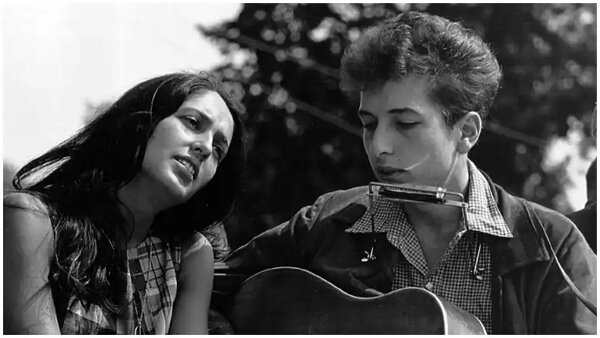
Bob Dylan on His Love for Joan Baez - Photo: https://heavy.com/ 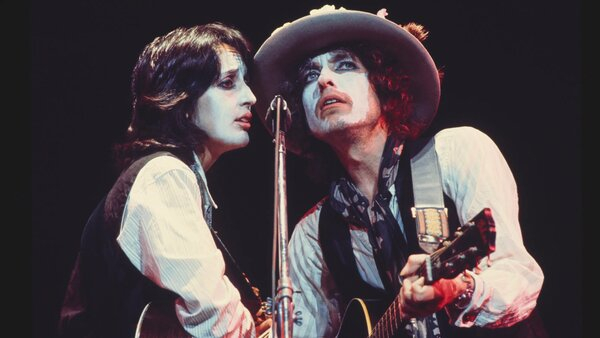
Photo: https://www.usatoday.com/ -
One of the interesting facts about Bob Dylan is that his divorce inspired some of his best music. Dylan frequently performed on tour from the middle through the end of the 1970s, receiving standing ovations. His family life, however, was terrible. When "Blood on the Tracks" was released in 1977, his marriage to Sara was finished. According to critics, the album is Dylan's most mature work to date. The album includes some of Dylan's big gest singles, including "Tangled Up In Blue," "Shelter From The Storm," and "Simple Twist of Fate," and the songs are well-written. An interesting fact about Bob Dylan is that the album is regarded by many fans as his best work.
A total of two million people saw Bob Dylan play 114 concerts throughout a year-long world tour in 1978, which he undertook in Japan, the Far East, Europe, and North America. Eight musicians made up Dylan's band, which also included three backup singers. Bob Dylan's performances at the Budokan in Tokyo in February and March were published as double discs. Janet Maslin supported the album in Rolling Stone, writing: "The recent live versions of old songs by he had the effect of freeing Bob Dylan from the original." Robert Christgau gave the album a C+ grade and a mocking review.
The press referred to Dylan's tour when he brought it to the United States in September 1978 as a "Las Vegas Tour" because of the sights and sounds. Even though the 1978 tour brought in more than $20 million, Dylan admitted to the Los Angeles Times that he was still in debt "I had some difficult years. I built a house and invested a lot of money in the film large home and expensive divorce proceedings in California ".
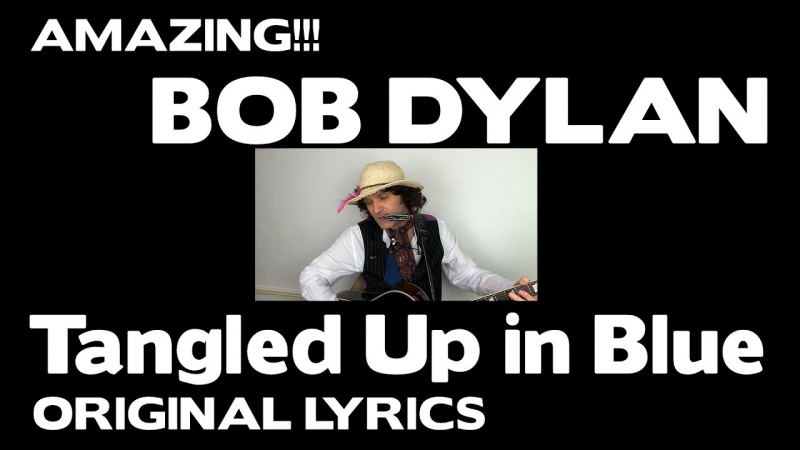
Photo: https://i.ytimg.com/ 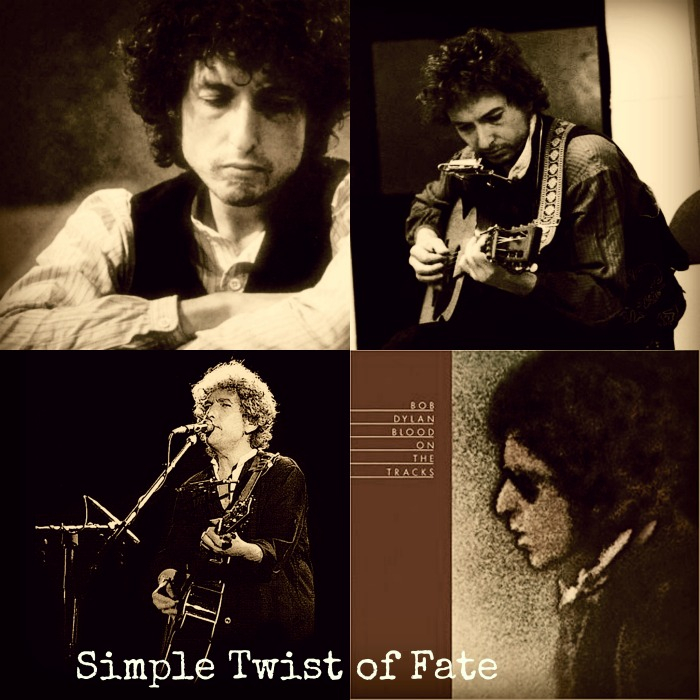
Photo: https://alldylan.com/ -
Dylan will receive the Nobel Prize in Literature, the Nobel Prize committee announced on October 13, 2016, "for bringing new creative expressions to the great American song tradition." According to the New York Times, Mr. Dylan, 75, is the first artist to get the honor, and his choice on Thursday is arguably the most radical in the award's history, which dates back to 1901. After earning the prize, Dylan kept quiet for a few days before telling reporter Edna Gundersen that it was "amazing, unbelievable Has anyone ever had a dream like that? ".
On June 5, 2017, the Nobel Prize website published Dylan's lecture. The New York Times said that the regulations have to be followed to get the prize's eight million Swedish kronor ($900,000). Laureates "must present a lecture within six months of the official event, which Mr. Dylan would have given by June 10," according to Swedish Academy guidelines. Danius, the secretary of the academy, said "As one may anticipate, the speech was outstanding and eloquent. Dylan's voyage is coming to an end now that the lecture has been given." Dylan discusses the effects of three novels that were significant to him in his essay: Moby-Dick by Herman Melville, All Quiet on the Western Front by Erich Maria Remarque, and Homer's Odyssey.
For his contributions to American culture, he was also awarded a Pulitzer Prize with a special mention. He has won 10 Grammy Awards, a Presidential Medal of Freedom nomination, a Golden Globe, an Academy Award, and a spot in the Rock and Roll Hall of Fame.
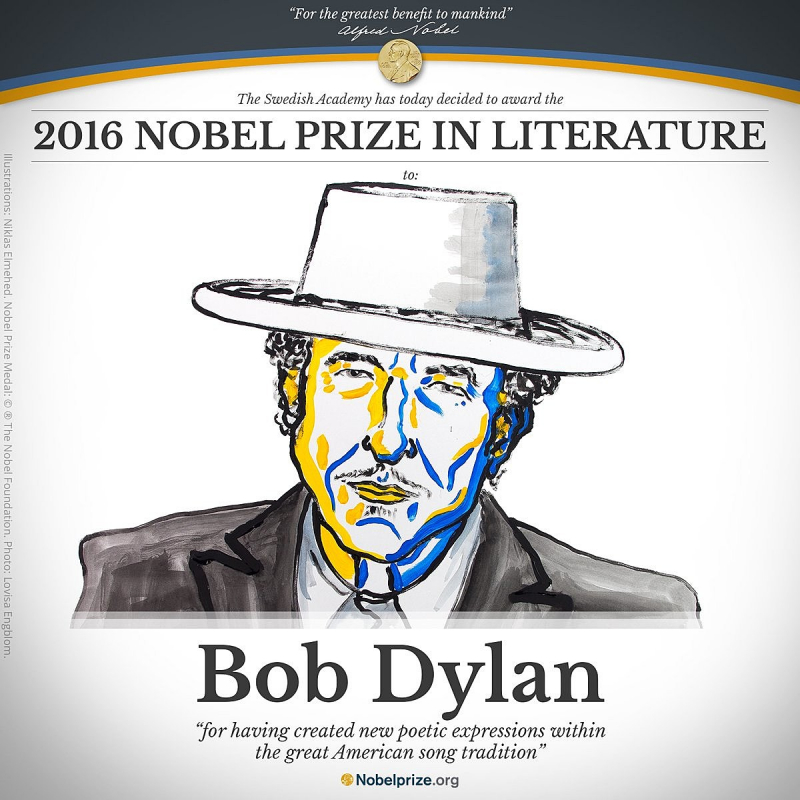
Photo: https://www.brooklynvegan.com/ 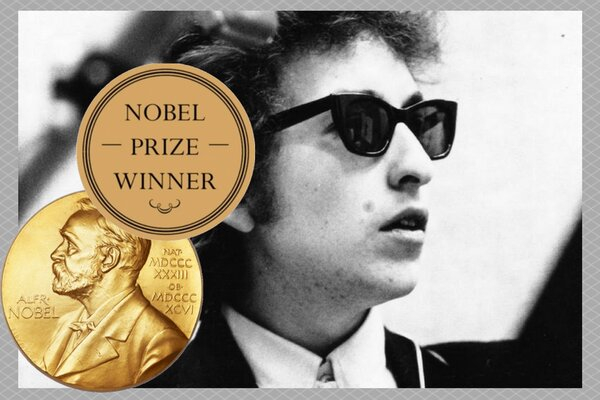
Photo: https://meteamedia.org/ -
One of the interesting facts about Bob Dylan is that he stole the song Blowin in The Wind from a New Jersey student. Dylan himself wrote the devotional song "No More Auction Block," which served as the inspiration for his song "Blowin' in the Wind." However, for years, it was said that Lorre Wyatt, a high school student who performed the song over a year before a recorded version of Dylan himself was released, had stolen the tune from Dylan.
But the explanation for that is simple: The youngsters were reading Broadside magazine, which had included Dylan's song and lyrics a year before The Freewheelin' Bob Dylan was published. Even though their friends denied it, Millburn High School students told Newsweek in November 1963 that they thought Wyatt wrote the song and that Dylan had paid him $1000 to obtain the right to it.
The Freewheelin' Bob Dylan, Dylan's second album, was released in May 1963, and it marked the beginning of his career as a singer-songwriter. One of his earliest public performances was "Blowin' in the Wind," which he performed. "Blowin' in the Wind," which borrows some of its beat from an old slave ballad. It was frequently covered by various musicians and was a success for Peter, Paul, and Mary.
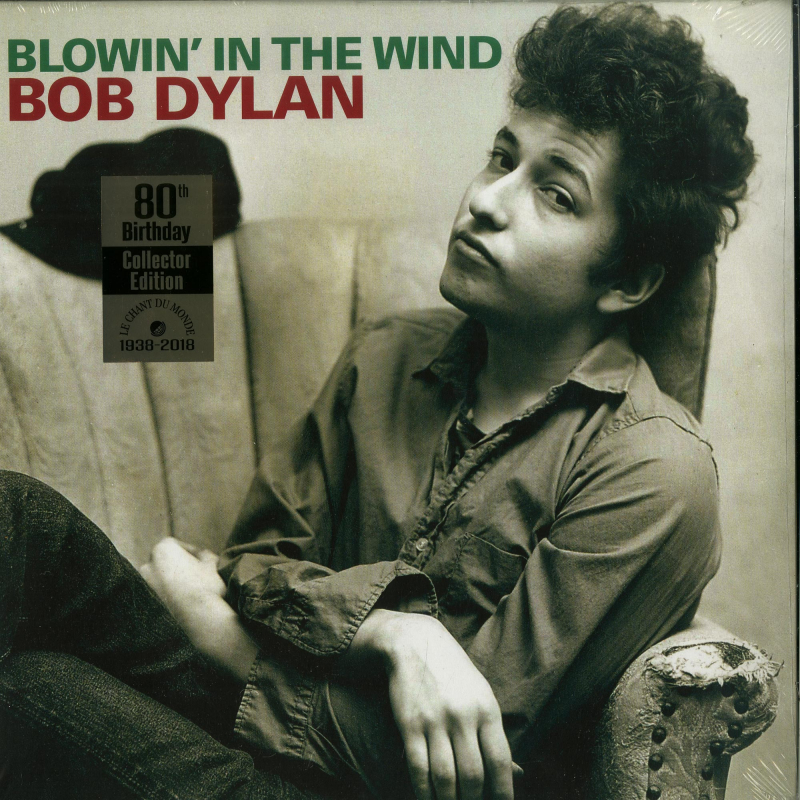
Photo: https://gfx2.decks.de/ 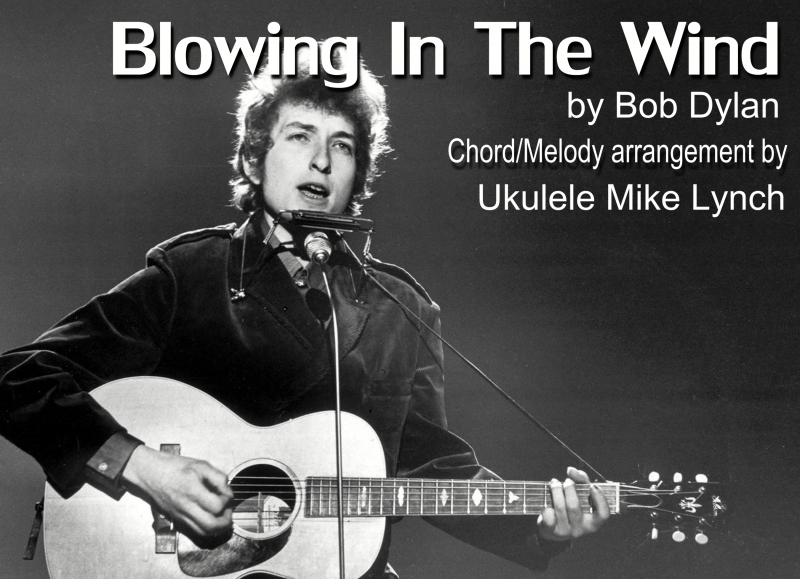
Photo: https://ukulelemikelynch.files.wordpress.com/ -
Although many people credit Dylan with starting the singer/songwriter era, his debut album didn't have a lot of original songs. Only two of the tracks are actually Dylan originals: "Talkin' New York" and "Song to Woody," the latter of which is an ode to Dylan's idol, Woody Guthrie, whom he met soon after relocating to New York City.
When Dylan began working on his debut album, he didn't have much stability in his life. Even worse, he lacks an abode. Fortunately, he was able to rent his own apartment with the money he made from that CD. Prior to it, he spent the majority of the evening relaxing on the couches of various acquaintances.But he made 161 West 4th Street his permanent home in the West Village using the money from his record deal. The picture that appeared on the cover of his second movie, The Freewheelin' Bob Dylan, released in 1963, was actually taken not far from Dylan's flat.
Dylan and Hammond convened in a Columbia studio in New York City on November 20 and 22, 1961, to record Dylan's debut album. A total of 17 songs, each in a single section and without accompaniment, were recorded by Dylan. In 1962, Dylan remarked, "Mr. Hammond asked me if I wanted to sing a song again, and I said no. "I can't keep singing the same song twice," the speaker said.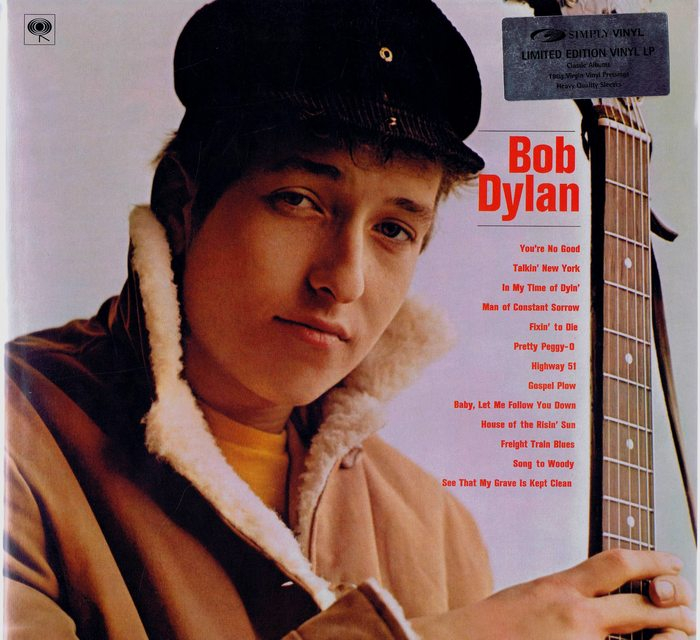
First album - Photo: http://assets.catawiki.nl/ 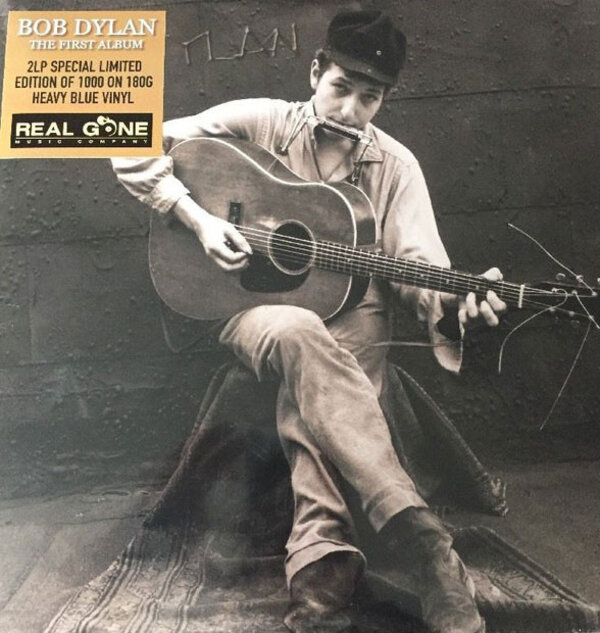
Photo: https://i.discogs.com/









